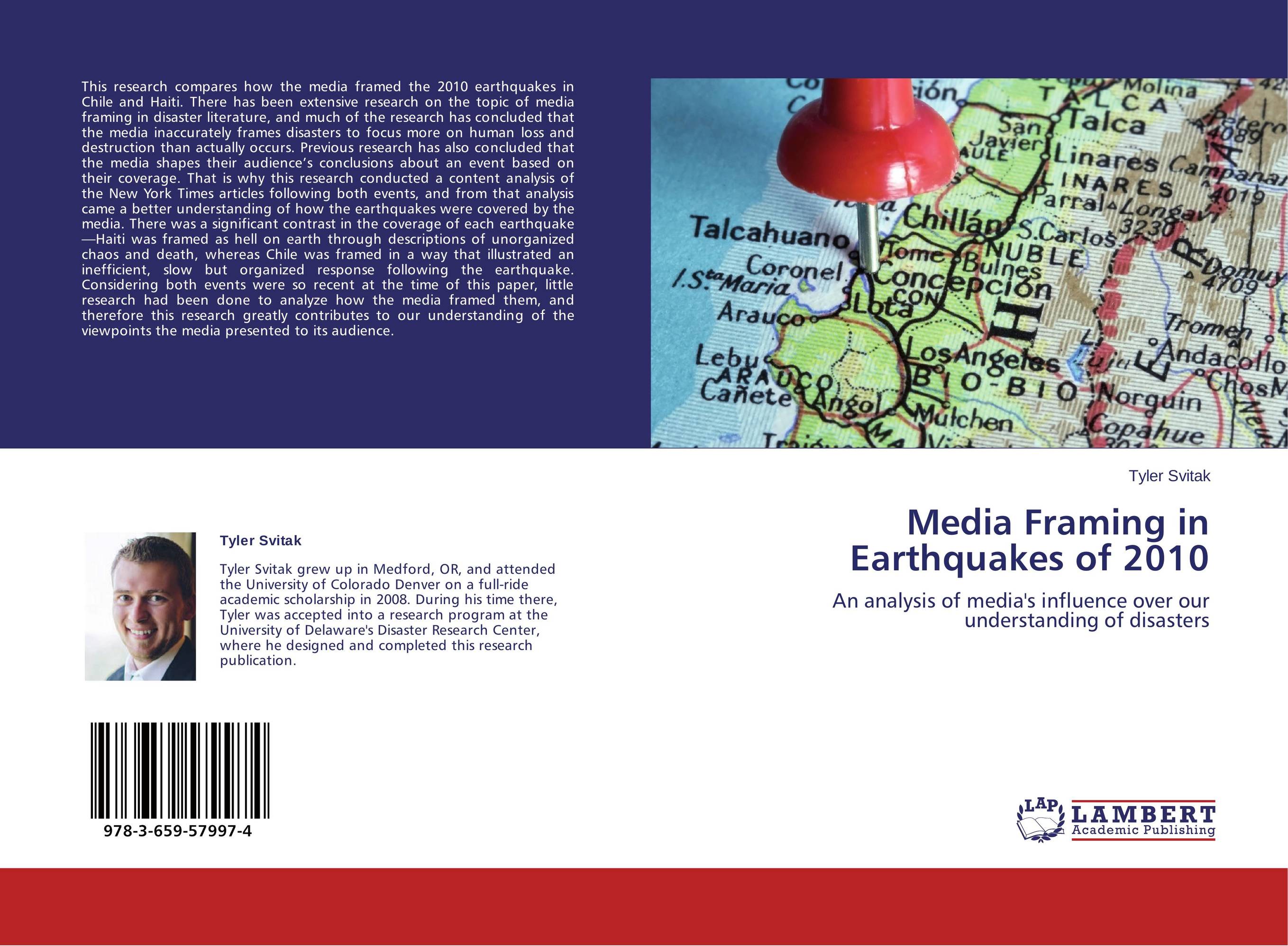| Поиск по каталогу |
|
(строгое соответствие)
|
- Профессиональная
- Научно-популярная
- Художественная
- Публицистика
- Детская
- Искусство
- Хобби, семья, дом
- Спорт
- Путеводители
- Блокноты, тетради, открытки
Media Framing in Earthquakes of 2010. An analysis of media's influence over our understanding of disasters

В наличии
| Местонахождение: Алматы | Состояние экземпляра: новый |

Бумажная
версия
версия
Автор: Tyler Svitak
ISBN: 9783659579974
Год издания: 2014
Формат книги: 60×90/16 (145×215 мм)
Количество страниц: 52
Издательство: LAP LAMBERT Academic Publishing
Цена: 20988 тг
Положить в корзину
| Способы доставки в город Алматы * комплектация (срок до отгрузки) не более 2 рабочих дней |
| Самовывоз из города Алматы (пункты самовывоза партнёра CDEK) |
| Курьерская доставка CDEK из города Москва |
| Доставка Почтой России из города Москва |
Аннотация: This research compares how the media framed the 2010 earthquakes in Chile and Haiti. There has been extensive research on the topic of media framing in disaster literature, and much of the research has concluded that the media inaccurately frames disasters to focus more on human loss and destruction than actually occurs. Previous research has also concluded that the media shapes their audience’s conclusions about an event based on their coverage. That is why this research conducted a content analysis of the New York Times articles following both events, and from that analysis came a better understanding of how the earthquakes were covered by the media. There was a significant contrast in the coverage of each earthquake—Haiti was framed as hell on earth through descriptions of unorganized chaos and death, whereas Chile was framed in a way that illustrated an inefficient, slow but organized response following the earthquake. Considering both events were so recent at the time of this paper, little research had been done to analyze how the media framed them, and therefore this research greatly contributes to our understanding of the viewpoints the media presented to its audience.
Ключевые слова: Chile, Natural Disaster, Hait?, Hazards, New York Times, Media Framing, Earthquakes



